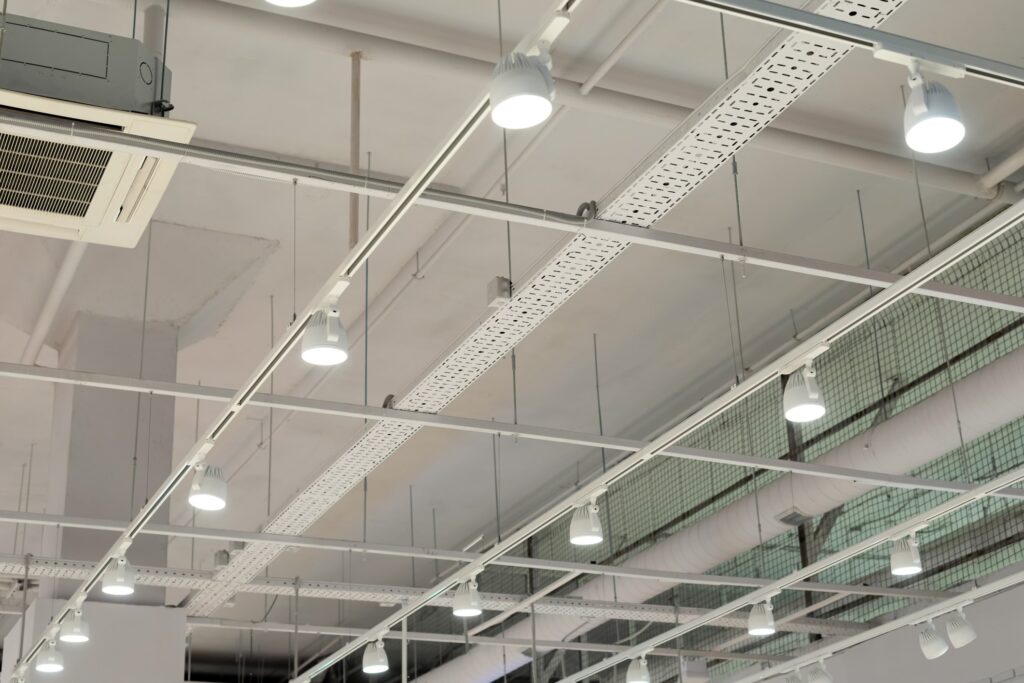
(Updated January 13, 2025)
As we step into 2025, grocery store retailers are poised to turn existing industry challenges into exciting opportunities for growth. The escalating demand for sustainable practices, alongside the push for boosted productivity and automation, is predicted to fuel a year of positive economic and environmental progress.
To prepare for the coming year, it’s essential for FM teams to proactively align their initiatives with emerging trends and consumer expectations. Here are some of the major facilities management trends we expect to see in 2025 and beyond.
2025 Facility Management Trends
1. Energy Monitoring
With rising energy costs and accelerated net zero targets, FM leaders are eager to reduce energy consumption significantly over the coming years. As a solution, they’re turning to remote monitoring software or EMS (energy monitoring systems), which tracks energy use, refrigeration performance, and refrigerant leakage and alerts facilities teams to spikes in energy consumption. This allows them to take mitigation steps remotely, if possible, or dispatch a technician if needed to address any issues before they turn into excessive power bills.
For example, City’s Spark+ tool is used to monitor temperature conditions of refrigeration units, hot bars, and other food and beverage equipment. Using data received from thousands of energy meters along with live weather data, the system alerts City’s central monitoring team to any anomalies so immediate action can be taken. As a result, City typically achieves a minimum of 10 percent reduction in energy use through EMS systems alone.
2. Predictive Maintenance Technologies
In recent years, the facilities management industry has been exploring new tools to support predictive maintenance. While we’re only just getting started in this promising area, it’s clear predictive maintenance technologies will be a game changer for FM teams.
Predictive maintenance utilizes specialized tools and technology to monitor the condition and performance of equipment to detect issues before they lead to asset failure. Unlike preventive maintenance, which tends to be done on a routine schedule regardless of the actual condition of equipment, predictive maintenance can detect specific emerging problems. The two work best in tandem, though, and proactive FM leaders increasingly use a mix of both preventive maintenance and predictive maintenance technology to ensure the best results.
Multiple types of predictive maintenance technologies are being explored, including ultrasound technology, vibration analysis, infrared analysis, laser-shaft alignment, oil analysis, and predictive analytics using artificial intelligence (AI), and machine learning. City uses SOUNDTech+ ultrasound technology, the City branded predictive maintenance tool powered by DST, which has a track record in the field of predicting catastrophic refrigeration rack failure before it becomes an issue with up to 98 percent accuracy once the tool is programmed.
By predicting asset failure before it happens, FM can cut down on unplanned downtime, save time in the field with more precise diagnostics for technicians, and extend the life of equipment.
3. Cutting Costs
Tackling rising supply chain costs — an ongoing issue thanks to inflation, shortages, and labor challenges — continues to be a priority for facilities management teams in 2025.
The key to finding savings opportunities is to analyze spending on a weekly basis. This means regularly inspecting the supply chain — from making bulk purchases to working with suppliers to order parts for less, there are usually a number of ways to cut back.
Partnering with an FM provider that uses an integrated self-delivery model can also help cut costs thanks to efficiencies resulting from close alignment. This model also achieves demonstrated cost savings through energy management and predictive maintenance technology.

4. Focus on Sustainability
Thanks to stricter net zero standards and increasing consumer awareness, sustainability remains a central focus for retail facilities managers. From installing EV charging stations to reducing emissions, everyone wants to get ahead of the curve. Here are some of the ways FM leaders are going green this year:
- Adding EV charging stations: Due to the passing of the 2022 Inflation Reduction Act (IRA), more and more grocery retailers are adding EV charging stations as a convenience for shoppers. Fast charging stations, which can power up EVs within 15 minutes, are particularly hot.
- Converting to electric fleets: As grocery fleets convert to electric, special EV charging stations are required for delivery trucks.
- Implementing sustainable refrigeration practices: The average supermarket uses thousands of pounds of HFC refrigerant and has a leak rate of about 25 percent of the refrigerant charge every year, according to the North American Sustainable Refrigeration Council (NASRC). Gas containment programs, strong PM programs, and transitioning to lower-GWP refrigerants are all ways FM leaders are reducing greenhouse gas emissions.
- LED retrofits: City’s customers see an average reduction of 225-250 KWH per year in 40,000–50,000 square foot facilities. Facilities that haven’t yet updated to LEDs are sure to make the transition in the near future.
5. Continued Growth of Click-and-Collect
According to eMarketer, click-and-collect sales are projected to grow 16.2 percent in 2025, surpassing $154 billion.
As click-and-collect, otherwise known as BOPIS (“buy online, pick up in store”), continues to gain momentum, facilities management teams will play an integral role in supporting these operations. This includes optimizing physical spaces to accommodate the growing number of online orders as well as temperature control for perishable items to ensure freshness and quality — all while ensuring energy efficiency for alignment with net-zero goals.
Strategic investments in refrigeration solutions and monitoring systems will be essential in order to meet the customer experience expectations and generate repeat business.
6. The Rising Value of IoT
More and more FM teams are turning to IoT (“Internet of Things”) technology to help them make data-backed decisions, streamline work management, and achieve cost savings. In fact, grocery retailers using the IoT can reduce costs by as much as 15 to 30 percent, reports McKinsey.
Some common uses for IoT technology in facilities management include:
- Automating labor-intensive tasks: By automating tasks and processes that are traditionally done manually, IoT solutions can save retailers on labor costs and free up employees to do other valuable work.
- Managing assets: IoT asset management can help grocery stores, superstores, and convenience stores better manage their HVAC and refrigeration systems, which is imperative for protecting perishables and ensuring food safety.
- Improving maintenance processes: By monitoring equipment performance in real-time, facility managers can identify issues before they result in downtime or costly repairs. Additionally, some IoT platforms offer predictive maintenance capabilities, which allow for preventative maintenance measures before breakdowns occur, further reducing downtime and product shrink.
- Optimizing scheduling: IoT technology can help pair the right technician with the right skillset in the right area of town who can respond the fastest and has the right part on their truck for the job.
- Saving energy: Automated HVAC and refrigeration systems controlled by IoT devices can save significant amounts of energy by identifying equipment that’s using excessive energy and automatically adjusting conditions.
The Future of Facilities Management
While the facilities management industry is evolving every day, it’s clear that the future is a self-delivered FM model that focuses on sustainability, proactive maintenance, and data intelligence and automation. Success will ultimately depend on who you choose to partner with in that journey.
At City, we offer a holistic approach to facilities management, which is proven to reduce retail store emissions by at least 15 percent and significantly lower costs. City is the only IFM provider with a 360-degree approach to facilities management. Learn more about our facilities management services.

 2016: City US is established in North America, in partnership with Southeastern Grocers (SEG), servicing over 750 supermarkets across 7 southern states.
2016: City US is established in North America, in partnership with Southeastern Grocers (SEG), servicing over 750 supermarkets across 7 southern states. 1985: Willie and Susan Haughey establish City Refrigeration Holdings (UK) Ltd in Glasgow, UK.
1985: Willie and Susan Haughey establish City Refrigeration Holdings (UK) Ltd in Glasgow, UK. 2009: City Australia launches in Melbourne, in partnership with Coles, servicing over 700 supermarkets across the country.
2009: City Australia launches in Melbourne, in partnership with Coles, servicing over 700 supermarkets across the country. 2015: City Asia launches in Kuala Lumpur, Malaysia, in partnership with Dairy Farm, servicing over 205 supermarkets across the region.
2015: City Asia launches in Kuala Lumpur, Malaysia, in partnership with Dairy Farm, servicing over 205 supermarkets across the region.